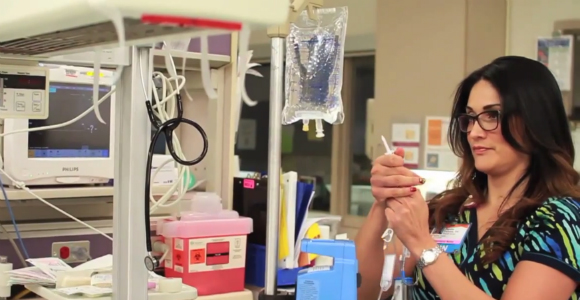
California is facing a healthcare crisis, but it may not be what many think. And, if you’re interested in a career in healthcare, the news is good.
In the next decade, the state will need nearly 450,000 more workers in all areas of healthcare – from lab technicians to dental hygienists to medical support positions, according to, “California’s Health Workforce Needs: Training Allied Workers,” a report released last week from the Public Policy Institute of California (PPIC).
And the reason for the growing need? According to the study, it is the combination of population growth, an aging demographic and expanded coverage under the Affordable Health Care Act.
“I think the one thing that was really interesting to us was that a large share of the jobs and future jobs in healthcare services will require a two-year certificate or a short-term certificate, not necessarily a four-year degree or higher,” said Sarah Bohn, a research fellow at PPIC and one of the study’s authors. She added, “We often talk about the need for more doctors and that’s definitely a big component, but we also have this allied work force which includes a lot of the skilled professionals and others that are providing services.”
To be more precise, the study showed that 40 percent of those needed jobs require some post-secondary training but less than a bachelor’s degree. At the same time, education levels of the workforce aren’t keeping up with the demand for these types of skilled workers.
Jennifer Fleischner, a nursing student at Pasadena City College, is optimistic about her future. She returned to community college after taking several years off to work in retail and care for her family. “I started thinking about what I wanted to do with the rest of my life and I wanted to do something that was really a career, a profession.”
With Fleischner and others interested in working in the healthcare field, the future of the workforce will rely heavily on the state’s Community College System. And the state is responding in a positive way. This year, the state budgeted $50 million for career technical education, adopting a new “shared investment” funding model that will allocate the funds to regions for further distribution, instead of diffusing them among all community colleges.
Also lawmakers included $250 million in the 2014-2015 budget for the Career Pathways Trust program, a work-based learning grant program. The California Economic Summit’s Workforce Action Team supported the initiatives.
According to Bohn, the funding increases are a good start. “There are a lot of efforts under way that I think are great to try to expand the pathways from education to career and to address what are the growing and in demand fields within the state.”
But more needs to be done to satisfy the demand and she suggested looking at the situation from a different angle. Bohn added, “I want to think about it from the student perspective in the long term, thinking about where the state is investing their resources and where the colleges are investing their resources and encouraging policy makers to take the lens of the eventual economic success and well-being of the student.”
She added that sometimes students aren’t always aware of the opportunities available to them and which ones will best pay-off in the long run.
For Fleischner, she’s looking forward to steady employment and a flexible work schedule. “There’s a salary and a lot of demand and I can create my own schedule. Because one of the things that I thought I can do would be in-home health care, so I can freelance.”
Showing students the lucrative pathways available and boosting vocational programs across California will be essential to filling this skills gap and showing support for both the healthcare of Californians and the workers who fill those jobs.

